Clinical Differential Diagnosis
(Wolf DVM, DABVP): Caudal abdominal neoplasia of renal, reproductive, intestinal origin, abscess, granuloma, obstipation.
Image Interpretation
(Wolf DVM, DABVP):
(Image 2) A homogeneous soft tissue mass is evident and rules out obstipation. Radiographic Differential: Caudal coelomic neoplasia/tumor, abscess, granuloma.
Sonographic Differential Diagnosis
(Lindquist DMV, DABVP): Solitary mass deriving from reproductive or renal origin; likely surgically resectable.
Sampling
(Wolf DVM, DABVP): Laparotomy revealed a testicular mass that was successfully removed. Histopathology: Seminoma (Image 7)
Outcome
The patient responded well postoperatively and was asymptomatic 6 weeks post-op and eating normally after 4 months of anorexia.


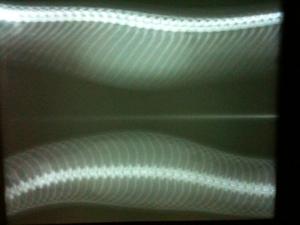

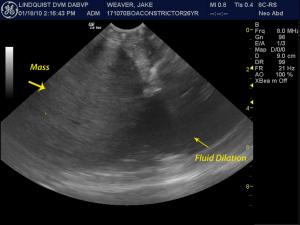
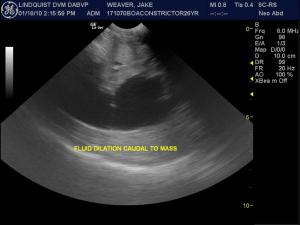
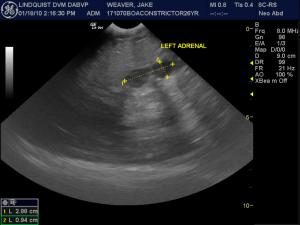
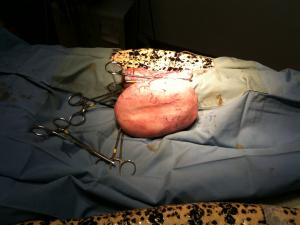

Comments